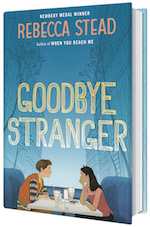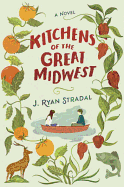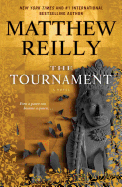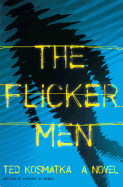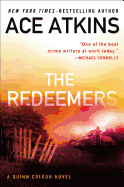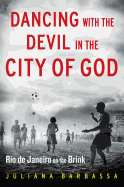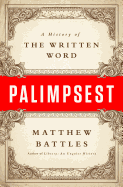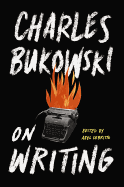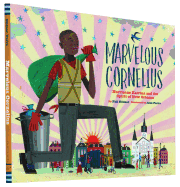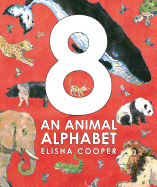
In Newbery Medalist Rebecca Stead's new novel, Goodbye Stranger (Wendy Lamb Books), Bridget Barsamian suffered a life-threatening accident at age eight that changed not only her, but the lives of those around her. Something a nurse said stayed with her: "You must have been put on this earth for a reason, little girl, to have survived." Bridge wonders, "What is the reason?" At the same time, two other stories intertwine with hers--that of Bridge's classmate Sherm, and an unnamed high-schooler's, told in a second-person narrative. Here Stead discusses how these three tales interlock and diverge, and the question to which she seems always to return.
What inspired you to tell this story about someone who gets a second chance at life?
Something that interests me is this time of life where you're seeing the world outside in a broader way. That also includes seeing yourself from the outside. That's a complicated thought, at an interesting, exciting, fun, scary time of life. It's another way to explore identity.
Who is your true self? Is it the person inside or the person other people know? At this stage, at age 11, 12, 13, 14--depending on who you are--half the time you're seeing yourself from the outside. Maybe from a boy's point of view, also a girl's point of view, your mother's, your friend's. It's the agony of feeling alone in your consciousness: Does anyone really know who you are inside?
A lot is the internal experience versus the external, how you're putting yourself out there and comparing that to what's inside. Liar & Spy was about an attempt to protect yourself--too much, possibly. In this story, they're not protecting themselves; I think Bridge's body knows her fear more than her brain does. She manifests her remaining fear physically more than emotionally or intellectually. But she has a lot of questions. I don't think she's afraid of them. They preoccupy her.
Tell us about the mysterious high-schooler, the one revealed through the second-person narrative, and her bond to Vinny.
Between that character and Vinny, there was a real emotional connection, which was broken. Sometimes at the root of those friendships, there's something real. That's another incredibly painful thing about childhood--and adult--friendship. Sometimes you have to recognize that a friendship is over. The answer is not always to fix it. Sometimes the answer is: the person you had a friendship with is gone, or the person you were in the friendship is gone. I think that's a lot of what that struggle turns out to be in the story.
Many of the complications in the friendships in this book involve triangles, when two team up and the third stands on the outside.
The three main characters, Bridge, Tab and Emily, are three strong girls with a strong friendship. I knew from the beginning--and there are few things that I know at the very beginning-- they'd support each other through the story, and there wouldn't be that kind of torture or pain that can go around when you have a friendship or a trio.
In the high school story, it wasn't going to be that way at all. That's a less detailed view of a situation where things fall apart. There's the relationship between Vinny and Zoe, Vinny's sidekick. The way she's remained Vinny's friend is by becoming a shadow. For the high-schooler, whose story we're learning throughout the book, that's not the way she wants to go. Realizing that brings her a lot of pain. It means she has to leave the relationship. Hopefully both feel familiar. I've had friendships that feel like Bridge's friendships, and then others more like the high schooler-Vinny relationship.
What happened to Bridge has a ripple effect on so many others. That's a theme that Goodbye Stranger shares with When You Reach Me--the idea of one action leading to a chain of other events.
That was something that developed as I wrote the story. I do remember having a more heavy-handed connection between Sherm's story and Bridget's accident in an early draft. I don't like to point too hard or put in too many aha moments. I prefer if my aha moments are emotional beats--something internal. My own responses are strongest when I'm reading about an inner realization or an emotional pivot of some kind.
The New York setting in your novels--When You Reach Me, Liar & Spy, and now Goodbye Stranger--is so real. There's a sense of timelessness to the city, almost like a Woody Allen film. How do you do that?
I think that stuff is mostly subconscious. I do myself the big favor of setting my novels in places where I've spent a lot of time. That's because it's much easier to write a story set in a place where you've internalized the setting already. You don't have to ask yourself about authenticity because you know it on an instinctual level. What I'm trying to do usually is build a story with a lot of tiny little fragments that I spend a lot of time picking up and arranging. I can see everything more clearly against a backdrop I know really well.
How does a new project begin for you? Does an idea hit you like a lightning bolt? Does a character introduce him- or herself to you?
This at the very very very beginning was a book I planned to write about Candy, Safer's sister in my last book [Liar & Spy], three years later. But the person who was being realized on the page was just not Candy. I had to switch gears and discover who the person was I was actually writing about, and what her history was.
I figured out fairly quickly that Bridge was going to be Bridge. I never plan stories; I might have a fragment in my mind or something that happened in my parenting community long ago, or someone else's parenting community. It went very slowly, just writing scenes about the characters and watching them talk to a lot of people. It's the best way to figure out who they are and how they talk. I abandoned the computer and wrote it mostly longhand. It was the best way to keep moving forward.
A lot of writing is tolerating the feeling of not knowing. There's a temptation to go back and reread instead of pushing forward into story. I sat away from my computer and away from the temptations of the Internet and wrote every day until I discovered something I didn't know.
And then there's self-confident Adrienne. Where did she come from?
It's always really fun to have a character who is not struggling at all. It's a nice place to rest as a writer. Adrienne's my person who's not struggling. She's a bit older than all the other young women in the story. She's a nice counterpoint and an interesting character for me.
She's sort of a model of a person who is living the life she wants. That's a big part of the struggle that some of the other characters are having. How do you go about building the life you want so you can live as the person you want to be? Hopefully that includes acting in a moral or decent way toward other people, making choices that respect who you are as a person.
There are times in life where that feels like a real juggling act. I think middle school is often where you're first attempting that in a complex way. Kids today also have these virtual selves that they create--an online self consisting of a collection of friends, a collection of photos, a collection of things you've done that you lay out for people to see. That's also challenging.
You explore different kinds of love--platonic love among friends, self-love and budding romantic love.
I wanted this to be a serious book about love. Not dramatic love, but significant, meaningful love. I was absolutely aware that I was painting a lot of different kinds of love--everything you mentioned plus Bridge and her brother, and Emily and Patrick. There's so much happening at this time of life. There are some who are ready for a little more, and others who are nowhere near any kind of physical relationships. I wanted to show a lot of different ideas.
I get very suspicious when I feel like one character represents a point of view and that character is right about everything, and another is unmitigated evil. That's not really how we encounter people most of the time. So I really tried to show everyone making mistakes. We probably wouldn't agree about what all the mistakes are. If we asked seventh-graders about what mistakes these characters make, I don't think they'd all come up with the same list.
That's the kind of story I try to tell. I was mostly trying to find a lot of pleasure in the way people love each other in this book but also acknowledge the ways we can get hurt.
When you explore a world and bring up a lot of questions, and everyone is making mistakes, that's the kind of book I like to read. --Jennifer M. Brown
 Hersey relates the experiences of six people in the city, beginning: "At exactly fifteen minutes past eight in the morning, on August 6th, 1945, Japanese time, at the moment when the atomic bomb flashed above Hiroshima, Miss Toshiko Sasaki, a clerk in the personnel department at the East Asia Tin Works, had just sat down at her place in the plant office and was turning her head to speak to the girl at the next desk." Hersey's prose technique suited the story well; as he wrote in a letter to historian Paul Boyer, "The flat style was deliberate, and I still think I was right to adopt it. A high literary manner, or a show of passion, would have brought me into the story as a mediator; I wanted to avoid such mediation, so the reader's experience would be as direct as possible."
Hersey relates the experiences of six people in the city, beginning: "At exactly fifteen minutes past eight in the morning, on August 6th, 1945, Japanese time, at the moment when the atomic bomb flashed above Hiroshima, Miss Toshiko Sasaki, a clerk in the personnel department at the East Asia Tin Works, had just sat down at her place in the plant office and was turning her head to speak to the girl at the next desk." Hersey's prose technique suited the story well; as he wrote in a letter to historian Paul Boyer, "The flat style was deliberate, and I still think I was right to adopt it. A high literary manner, or a show of passion, would have brought me into the story as a mediator; I wanted to avoid such mediation, so the reader's experience would be as direct as possible."


